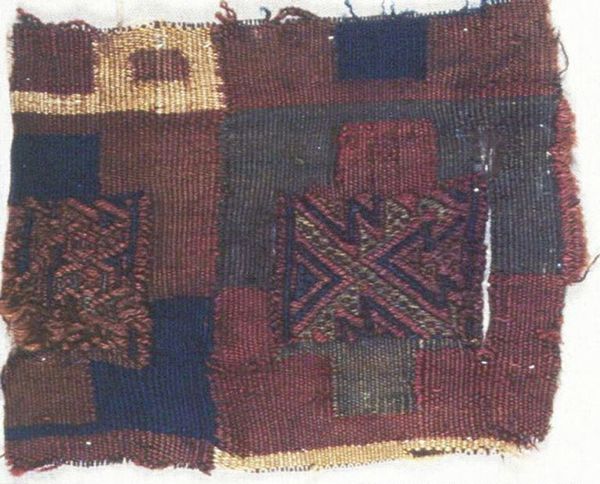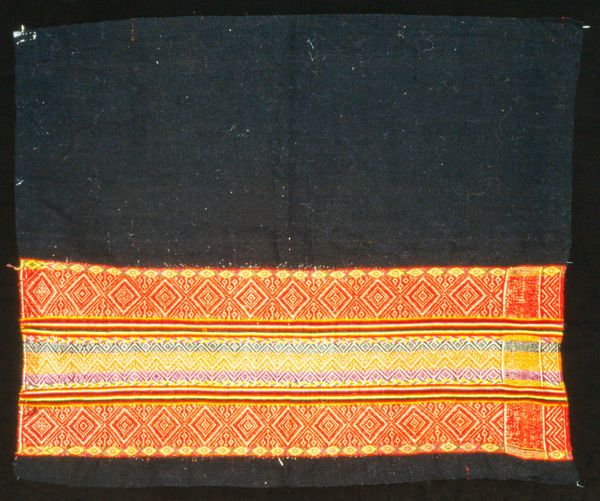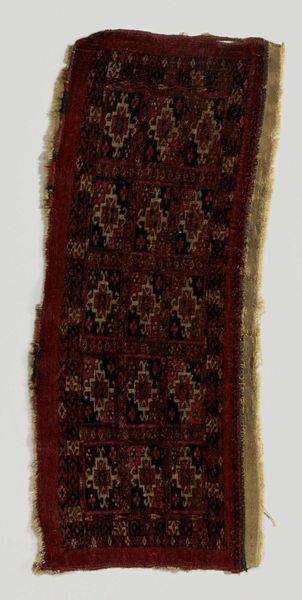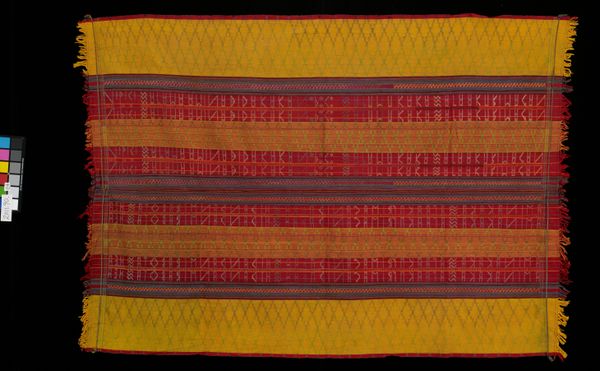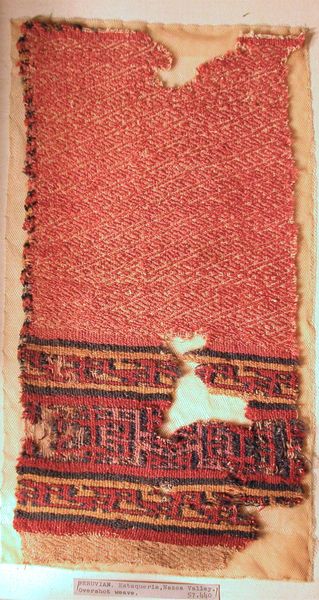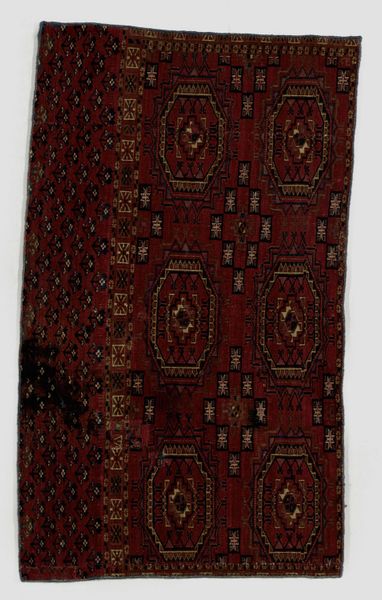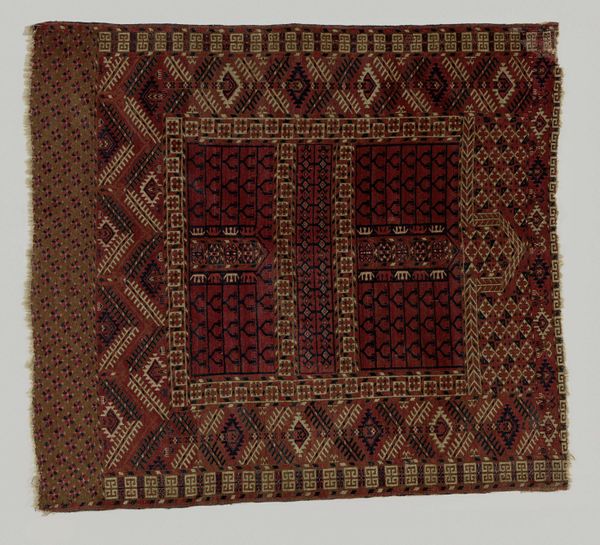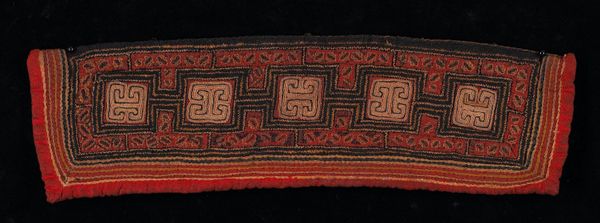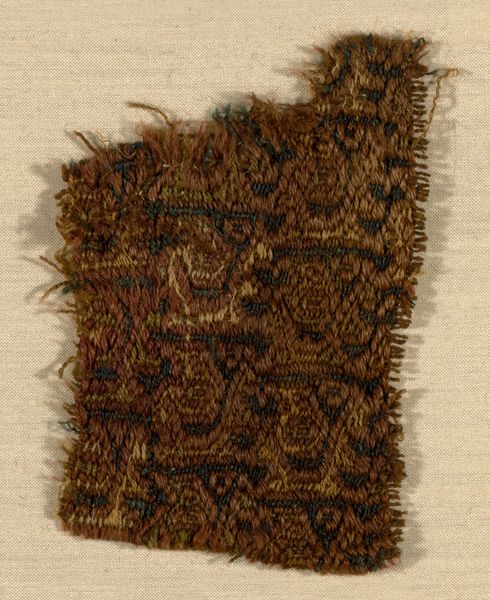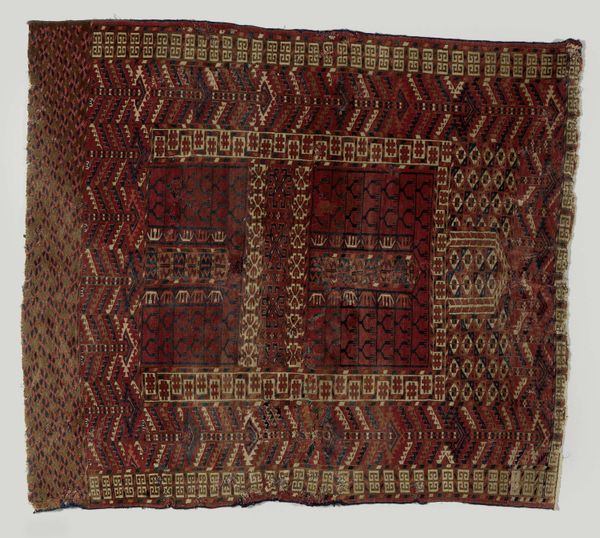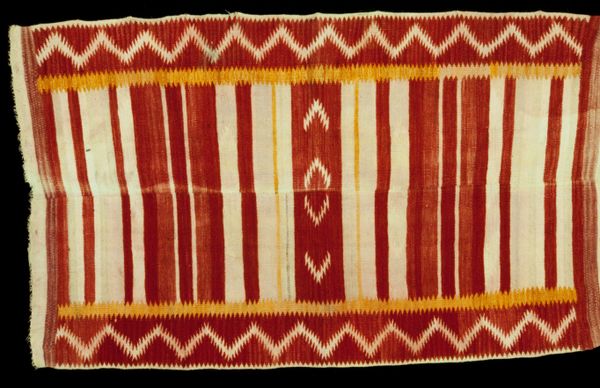
weaving, textile
#
weaving
#
textile
#
geometric
#
indigenous-americas
Dimensions: 9.2 cm × 46 cm (3 5/8 × 18 1/8 in.)
Copyright: Public Domain
Curator: Looking at this Fragment, a weaving likely created between 1000 and 1532, I immediately think about the complex cultural exchange and colonial impact in the Indigenous Americas. Editor: My initial response is awe at the texture. It looks carefully made. You can feel the weaver’s labor in its intricate, geometric patterns against that beautiful, muted brick-red ground. Curator: The geometry itself is fascinating, a visual language indicative of deep cosmologies and social structures. It speaks volumes about identity in Ica. These textiles were more than decoration. They served as markers of status, narrators of history, and sacred objects within intricate social systems. Editor: Absolutely. We need to consider how this fragment’s materiality relates to power dynamics within Ica society. Who controlled the means of textile production, and what significance did specific dyes and fibers carry? This weaving shows sophistication with dyed fibers woven into rectilinear shapes against a solid colored background. Curator: Exactly. Textile production, access to resources like dyes, the geometric and the iconography depicted--all contribute to our understanding of the sociopolitical landscape. How did gender roles intersect with weaving? How did colonial dynamics disrupt those traditions, revaluing some materials while erasing others? Editor: It also provokes a curiosity about the lives and materials intertwined in its creation. The weaver's skill represents hours dedicated to labor. From where were the textile’s raw materials gathered, processed, and distributed, and what does this suggest about Ica’s exchange networks? Curator: When considering Indigenous Americas art from this period, we must be mindful of the fragmented narratives often presented. It is important to seek alternative epistemologies when understanding this object. Editor: True. While museums provide important points of access to objects like these, considering them outside a western exhibition context can alter the narrative about the role this played as a valued good in trade networks. Curator: So, as we look at this small, surviving "Fragment", may we acknowledge the profound interconnectedness woven into every thread. Editor: And appreciate the material intelligence it reveals about resourcefulness and adaptation.
Comments
No comments
Be the first to comment and join the conversation on the ultimate creative platform.
